Truly wonderful.
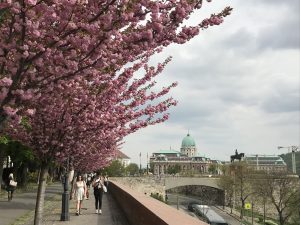
Truly wonderful.

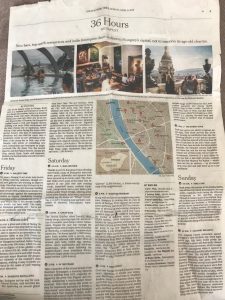 I’ve received this article from three guests of mine at different occasions – and thank you so much guys for your preparations before your actual trip to Budapest. I need to tell that most of the places recommended by The New York Times are both fun and nice, still, I have the impression I can show you so much more when you come to visit my beautiful city.
I’ve received this article from three guests of mine at different occasions – and thank you so much guys for your preparations before your actual trip to Budapest. I need to tell that most of the places recommended by The New York Times are both fun and nice, still, I have the impression I can show you so much more when you come to visit my beautiful city.
Feel free to ask for my special recommendations!
To show how much local people love the Széchenyi baths, I can tell you that we also have a nickname for it and call it simply ‘Szecska’. It opened in 1913 and has a total of 18 indoor and outdoor swimming pools. It’s one of the most richly ornate buildings of the city with an architecture combining Neo-Renaissance and Classicist elements. One really has to see the main foyer where both the statues and mosaics are all realted to water and bathing culture.
I only recommend going to the Szecska in the summer for those who don’t mind crowds but it’s really quiet and enjoyable in the winter. I can take you to the Széchenyi if you book the Baths of Budapest walking tour with me.
More information about prices and opening hours.

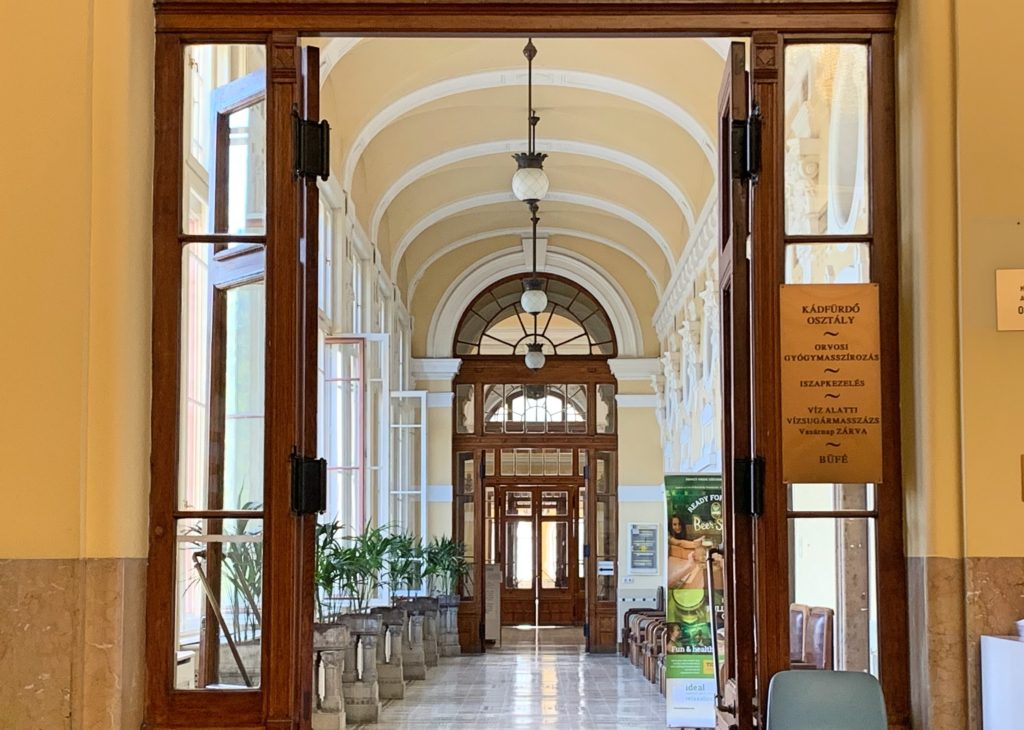
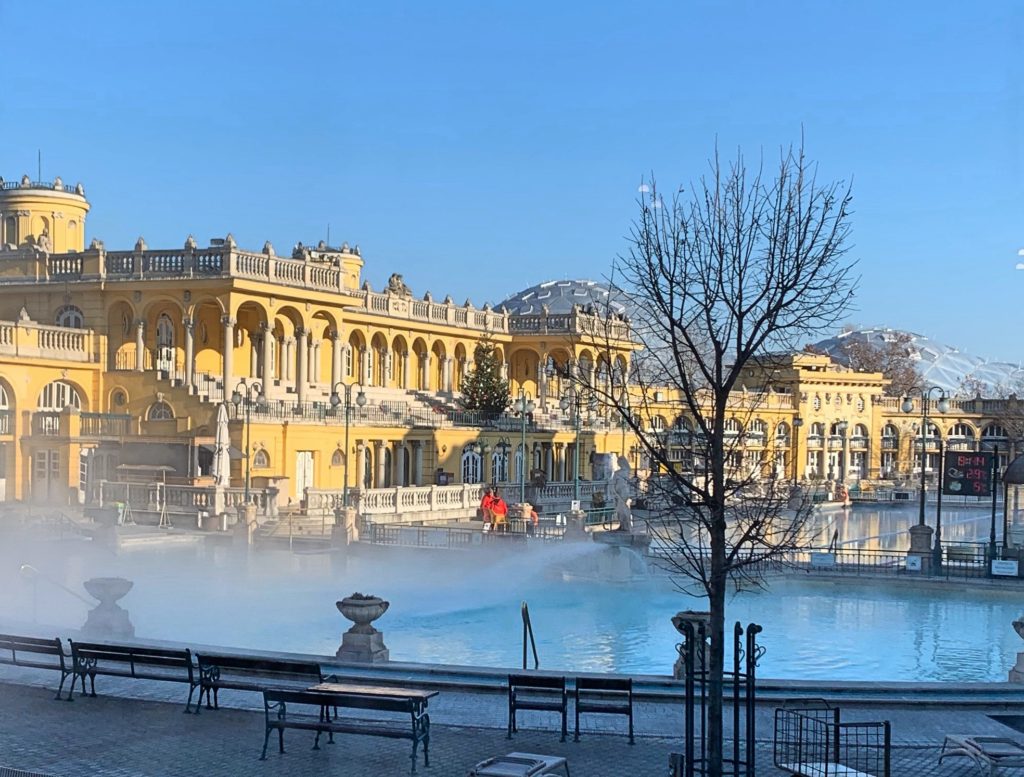
We had the most exciting tour today about the Hungarian Samizdat press. I had the privilege to work with Kö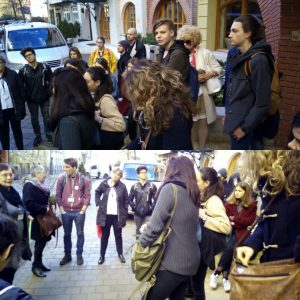 zgazdasági Politechnikum in this great project: Building Democratic Europe Together – http://budet.poli.hu/
zgazdasági Politechnikum in this great project: Building Democratic Europe Together – http://budet.poli.hu/
My tour’s focus was the illegal, uncensored production, publishing and distribution of books and articles which couldn’t have been published in the Communist regime. It was all about conspiracy, clandestine operations and about how the state and state security tried to liquidate the entire movement, but more importantly my tour was about the desire to exercise free speech and free press, essential pillars of our new democracy.
It was great to see the enthusiasm of both students and teachers and I’m very proud to have been part of it.
Bathing and bathing culture have always been an important part of our everyday life. According to a survey I’ve just read 30% of the locals go to the baths regularly. It’s fun, very relaxing and has healing effects, too. I can show you some of the most authentic Budapest baths if you join me for a tour.
The Gellért bathhouse is the most elegant bath complex of Budapest. The building is one of the most amazing pieces of the Budapest Art Nouveau and opened in 1918. When you have a look at the richly ornate facade of the building its hard to imagine that before the construction of the elegant hotel, the place had been referred to as to the muddy baths, where both people and animals had their regular bath.
The thermal baths are fed by the mineral hot springs of the Gellért hill. The water is rich in calcium, magnesium, hydrocarbonate and sulfate. The water temperature varies from 35 °C to 40 °C.
Don’t miss the Turkish section where the walls are so nicely decorated with colorful mosaics. The bath can be visited throughout the year, if you happen to be in Budapest in the summer, you can also take advantage of the outdoor wave pool.
My two greatest passions are tour guiding and photography. I’ve been involved in photography in a way or another my entire adult life and I always try to catch the beauty I see walking around Budapest every day. Some of my pictures are on Instagram, too: – https://www.instagram.com/kravianszky/
Wishing you a very happy and prosperous new year from the top of the Fisherman’s Bastion in Budapest.
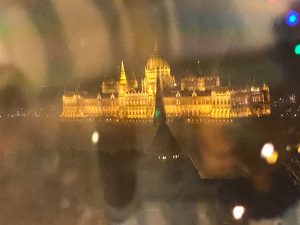
The truly amazing atmosphere of Budapest during the Christmas holidays, all the beautiful lights, gold and glitter of the city I love so much.
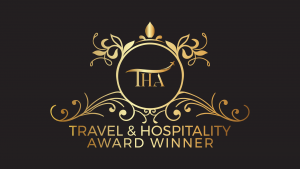 I’m the extremely proud winner of Travel and Hospitality Awards’ Private Tour Company – of the Year 2018 in Hungary. This is an award I appreciate a lot and it’s also a great feedback showing that my guests are happy with my services as their private Budapest tour guide. It’s time to celebrate!
I’m the extremely proud winner of Travel and Hospitality Awards’ Private Tour Company – of the Year 2018 in Hungary. This is an award I appreciate a lot and it’s also a great feedback showing that my guests are happy with my services as their private Budapest tour guide. It’s time to celebrate!
Budapest is beautiful day and night, surprisingly it’s like a totally different town when darkness falls. I enjoy very much touring in the city when one can enjoy its amazing lights especially looking at them from the Buda hills. Join my “The lights of Budapest” tour, so that I can show you the nicely lit buildings and tell you more about the stories of my city.
Bathing and bathing culture have always been an important part of our everyday life. According to a survey I’ve just read 30% of the locals go to the baths regularly. It’s fun, very relaxing and has healing effects, too. I can show you some of the most authentic Budapest baths if you join me for a tour.
The Gellért bathhouse is the most elegant bath complex of Budapest. The building is one of the most amazing pieces of the Budapest Art Nouveau and opened in 1918. When you have a look at the richly ornate facade of the building its hard to imagine that before the construction of the elegant hotel, the place had been referred to as to the muddy baths, where both people and animals had their regular bath.
The thermal baths are fed by the mineral hot springs of the Gellért hill. The water is rich in calcium, magnesium, hydrocarbonate and sulfate. The water temperature varies from 35 °C to 40 °C.
Don’t miss the Turkish section where the walls are so nicely decorated with colorful mosaics. The bath can be visited throughout the year, if you happen to be in Budapest in the summer, you can also take advantage of the outdoor wave pool.
Wishing you a very happy and prosperous new year from the top of the Fisherman’s Bastion in Budapest.

The truly amazing atmosphere of Budapest during the Christmas holidays, all the beautiful lights, gold and glitter of the city I love so much.
We decided to celebrate the National Day by hiking around the beautiful Buda hills. We hoped to enjoy some splendid view over Budapest from the top of the Elisabeth tower but couldn’t wait until the fog eventually lifted. It was a beautiful day shared with many other hikers who visited the area despite the sad weather.
I’m not exactly the person who gets invited to the Presidential Palace very often but we were very lucky with my guests last weekend when the doors of the Sándor Palace were open and the public could walk around the beautifully designed interior.
Compared to the relatively simple outside the interior is surprisingly richly ornate, at times I felt like walking around the Versailles Palace. The building is from 1806 and was the residence of the country’s prime minister from 1867. That’s when Queen Elisabeth or Sisi visited the handsome count Andrássy several times after enjoying a performance at the Castle Theatre next door.
The building was restored and became the seat of the offices of the President in 2003, the actual furnitures are reproductions of the originals. The entire restoration was conducted in accordance with the original blueprints. The garden is absolutely stunning with a great view over the Pest side. There is no guarantee we can tour the interior when you book a tour in the Buda Castle district but I’ll find a way to show you something just as beautiful as the Sándor Palace.
Yes, Pécs is one of my favorite destinations so I’d like to encourage you to book a tour at your earliest convenience. Once you have a look at the pictures below I’m sure you’ll fall in love with the city, too.
Pécs is very unique because the entire Hungarian history is on display in the city’s architecture, spirit and charm. You can learn so much while just walking around the cobblestoned streets.
We start the tour discovering the 1700-year-old Early Christian Necropolis, the well preserved burial chambers of the Romans fron the 4th century. We continue in the 11th century Basilica on Dóm square, an important symbol of the continuous fight of the Hungarians for Christianity. We tour the ruins of the Turkish baths, the only Turkish age mosque in Hungary that has remained intact together with its minaret and the 13th century Catholic church converted into a mosque in the 1540’s and reconverted into a Catholic church in the 1680’s. I’m sure you’ll be surprised to notice the special combination of the Muslim crescent moon and the Christian cross topping the church, reminding us of the peaceful coexistence of different religions. We admire the harmonious Baroque architecture and also have a look at the Vasarely museum.
After the city tour I take you to the Zsolnay quarter, the completely renovated and restored Zsolnay factory buildings where the most beautiful Hungarian porcelain and ceramic products have been manufactured since 1853.
We visited this cute little village last week as it was part of a family research I was working on for my guests arriving from Australia. I’ve never been to Szentkút before but I’m very much impressed by this enormous pilgrimage site, it’s just too bad it was deserted this part of the year. I understand it’s much more crowded in August when open air masses are held for hundreds of thousands of people.
The fountains have been famous for their healing power for some 700 years now and is declared a National Shrine since 2006.
